List of religious populations
This is a list of religious populations by number of adherents and countries.
Adherents in 2020
| Religion | Adherents | Percentage |
|---|---|---|
| Christianity | 2.4 billion[1] | 29% |
| Islam | 1.9 billion | 24% |
| Hinduism | 1.2 billion[1] | 15.4% |
| Secular[lower-alpha 1]/Nonreligious[lower-alpha 2]/Agnostic/Atheist | 1.1 billion | 14.1% |
| Buddhism | 506 million | 6% |
| Chinese traditional religion[lower-alpha 3] | 394 million | 5% |
| Ethnic religions excluding some in separate categories | 300 million | 3% |
| African traditional religions | 100 million[4] | 1.2% |
| Sikhism | 23 million | 0.29% |
| Spiritism | 15 million | 0.19% |
| Judaism | 14.7 million[5] | 0.18% |
| Bahá'í | 7.0 million | 0.09% |
| Jainism | 4.2 million | 0.05% |
| Shinto | 4.0 million | 0.05% |
| Cao Dai | 4.0 million | 0.05% |
| Zoroastrianism | 2.6 million | 0.03% |
| Tenrikyo | 2.0 million | 0.02% |
| Animism | 1.9 million | 0.02% |
| Neo-Paganism | 1.0 million | 0.01% |
| Unitarian Universalism | 0.8 million | 0.01% |
| Rastafari | 0.6 million | 0.007% |
| total | 7.79 billion | 100% |
Notes
- These figures may incorporate populations of secular/nominal adherents as well as syncretist worshipers, although the concept of syncretism is disputed by some.
- Nonreligious includes agnostic, atheist, secular humanist, and people answering 'none' or no religious preference. Half of this group is theistic but nonreligious.[2] According to a 2012 study by Gallup International "59% of the world said that they think of themselves as religious person, 23% think of themselves as not religious whereas 13% think of themselves as convinced atheists".[3]
- Chinese traditional religion is described as "the common religion of the majority Chinese culture: a combination of Confucianism, Buddhism, and Taoism, as well as the traditional non-scriptural/local practices and beliefs."
By proportion
Christians
Countries with the greatest proportion of Christians from Christianity by country (as of 2010):
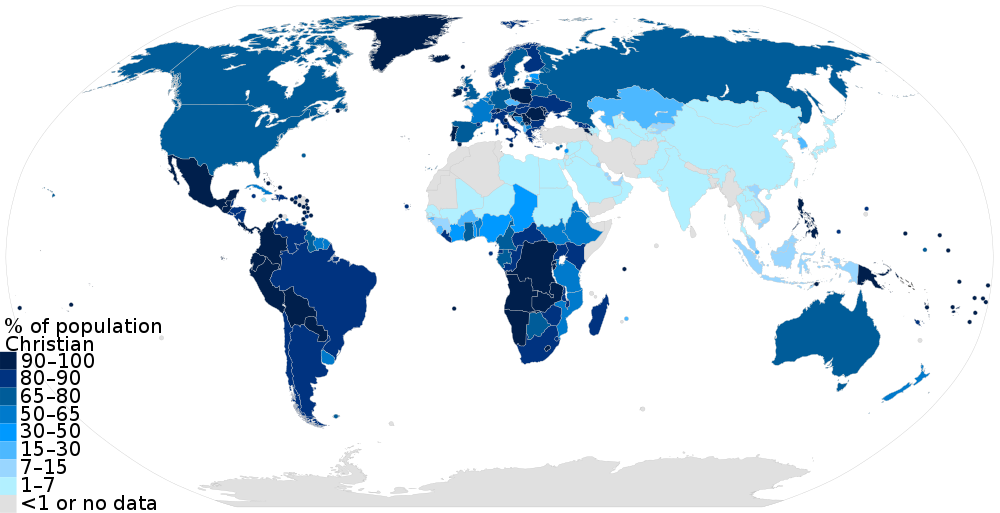




















Muslims
Countries with the greatest proportion of Muslims from Islam by country (as of 2010) (figures excluding foreign workers in parenthesis):
Data is based on the Pew Forum on Religion and Public Life [24]






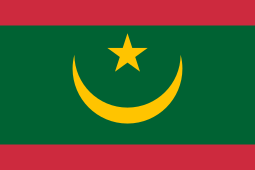




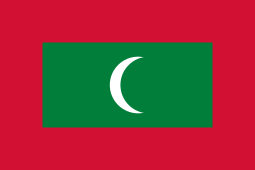















Irreligious and atheist
Countries with the greatest proportion of people without religion (including agnostics and atheists) from Irreligion by country (as of 2007):
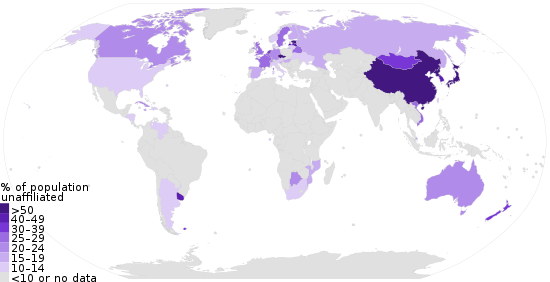


















.svg.png)



Remarks: Ranked by mean estimate which is in brackets. Irreligious includes agnostic, atheist, secular believer, and people having no formal religious adherence. It does not necessarily mean that members of this group don't belong to any religion. Some religions have harmonized with local cultures and can be seen as a cultural background rather than a formal religion. Additionally, the practice of officially associating a family or household with a religious institute while not formally practicing the affiliated religion is common in many countries. Thus, over half of this group is theistic and/or influenced by religious principles, but nonreligious/non-practicing and not true atheists or agnostics.[2] See Spiritual but not religious.
Hindus
Countries with the greatest proportion of Hindus from Hinduism by country (as of 2010):
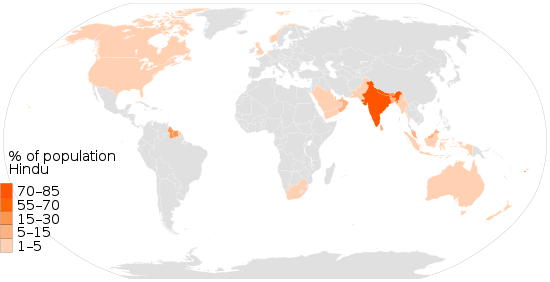























Buddhists
Countries with the greatest proportion of Buddhists from Buddhism by country (as of 2010):[64]
Taoists/Confucianists/Chinese traditional religionists
As a spiritual practice, Taoism has made fewer inroads in the West than Buddhism and Hinduism. Despite the popularity of its great classics the I Ching and the Tao Te Ching, the specific practices of Taoism have not been promulgated in America with much success;[65] these religions are not ubiquitous worldwide in the way that adherents of bigger world religions are, and they remain primarily an ethnic religion. Nonetheless, Taoist ideas and symbols such as Taijitu have become popular throughout the world through Tai Chi Chuan, Qigong, and various martial arts.[66]










The Chinese traditional religion has 184,000 believers in Latin America, 250,000 believers in Europe, and 839,000 believers in North America as of 1998.[72][73]
Ethnic and indigenous
All of the below come from the U.S. Department of State 2009 International Religious Freedom Report,[74] based on the highest estimate of people identified as indigenous or followers of indigenous religions that have been well-defined. Due to the syncretic nature of these religions, the following numbers may not reflect the actual number of practitioners.






















Sikhism
Countries with the greatest proportion of Sikhs:


.svg.png)





.svg.png)

The Sikh homeland is the Punjab state, in India, where today Sikhs make up approximately 61% of the population. This is the only place where Sikhs are in the majority. Sikhs have emigrated to countries all over the world – especially to English-speaking and East Asian nations. In doing so they have retained, to an unusually high degree, their distinctive cultural and religious identity. Sikhs are not ubiquitous worldwide in the way that adherents of larger world religions are, and they remain primarily an ethnic religion. But they can be found in many international cities and have become an especially strong religious presence in the United Kingdom and Canada.[95]
Spiritism













.svg.png)






Note that all these estimates come from a single source. However, this source gives a relative indication of the size of the Spiritist communities within each country.
Judaism
Countries with the greatest proportion of Jews (as of 2017):




.svg.png)



.svg.png)



.svg.png)













Bahá'ís
Countries with the greatest proportion of Bahá'ís (as of 2010) with a national population ≥200,000:












.svg.png)







- Remarks and sources: The Association of Religion Data Archives' "Most Baha'i Nations (2010)" which used the "World Christian Database" for adherents estimates based on information provided by the World Christian Encyclopedia and "World Christian Trends".[102] A source whose only systematic flaw was to consistently have a higher estimate of Christians than other cross-national data sets.[103] See Adherents.com's "The Largest Baha'i Communities" for 2000 estimates among all nations.[104] Various census figures of some of these countries vary significantly. See Bahá'í statistics.
By population
Christians
Largest Christian populations (as of 2011):

























Hindus
Largest Hindu populations (as of 2020)[112]:













.svg.png)


.svg.png)











Muslims
Largest Muslim populations (as of 2017):





















Buddhists
Largest Buddhist populations[117]
Sikhs
Largest Sikh populations


.svg.png)



.svg.png)













Jews
Largest Jewish populations (as of 2017):



.svg.png)




.svg.png)






.svg.png)









Bahá'ís
Largest Bahá'í populations (as of 2010) in countries with a national population ≥200,000:[119]




















Jainism
As of 2005:[122]
See also
Religions:
- Religions by country
- Bahá'í Faith by country
- Buddhism by country
- Christianity by country
- Roman Catholicism by country
- Protestantism by country
- Eastern Orthodoxy by country
- Oriental Orthodoxy by country
- Hinduism by country
- Islam by country
- Judaism by country
- Sikhism by country
References
- "Religious Composition by Country, 2010-2050". Pew Research Center. 2 April 2015.
- Adherents.com (archived from the original on 29 February 2020)
- "Global Index of Religion and Atheism: Press Release" (PDF). Archived from the original (PDF) on 16 October 2012. Retrieved 1 July 2015.
- Lugira, Aloysius M. (2009). African Traditional Religions. New York: Chealsea House. p. 36. Cited in Varghese, Roy Abraham (2011). Christ Connection: How the World Religions Prepared the Way for the Penomenon of Jesus. Paraclete Press. p. 1935. ISBN 9781557258397. Retrieved 24 March 2019.
- "Jewish population - world 2017"" (PDF). www.jewishdatabank.org. Jewish data bank. Retrieved 25 April 2019.
- "The World Factbook". Cia.gov. Retrieved 14 February 2015.
- "Catholic Church". Gcatholic.org. Retrieved 14 February 2015.
- "The World Factbook". Cia.gov. Retrieved 14 February 2015.
- "The Association of Religion Data Archives – National Profiles". Thearda.com. Retrieved 14 February 2015.
- "The World Factbook". Cia.gov. Retrieved 14 February 2015.
- "The World Factbook". Cia.gov. Retrieved 14 February 2015.
- "The World Factbook". Cia.gov. Retrieved 14 February 2015.
- "Marshall Islands". U.S. Department of State. Archived from the original on 30 November 2009. Retrieved 14 February 2015.
- "2006 Tonga Census". Spc.int. Retrieved 14 February 2015.
- "San Marino". International Religious Freedom Report 2006. US Department of State: Diplomacy in Action. Retrieved 16 August 2012.
- "US Department of State – Paraguay – International Religious Freedom Report 2005". Retrieved 3 June 2007.
- "The Association of Religion Data Archives – National Profiles". Thearda.com. Retrieved 14 February 2015.
- "Kiribati". U.S. Department of State. Archived from the original on 30 November 2009. Retrieved 14 February 2015.
- "Micronesia, Federated States of". U.S. Department of State. Archived from the original on 30 November 2009. Retrieved 14 February 2015.
- "Barbados". U.S. Department of State. Archived from the original on 30 November 2009. Retrieved 14 February 2015.
- "Papua New Guinea, Religion and Social Profile – National Profiles – International Data". Thearda.com. Retrieved 14 February 2015.
- "References :: Definitions and Notes — The World Factbook - Central Intelligence Agency". www.cia.gov.
- "The Association of Religion Data Archives – National Profiles". Thearda.com. Retrieved 14 February 2015.
- Miller, Tracy, ed. (October 2009). Mapping the Global Muslim Population: A Report on the Size and Distribution of the World's Muslim Population (PDF). Pew Research Center. Archived from the original (PDF) on 5 August 2010. Retrieved 30 May 2019.
- "The World Factbook". Cia.gov. Retrieved 14 February 2015.
- "The World Factbook". Cia.gov. Archived from the original on 3 February 2012. Retrieved 14 February 2015.
- "The World Factbook". Cia.gov. Retrieved 14 February 2015.
- "The World Factbook". cia.gov. Retrieved 14 February 2015.
- "The World Factbook". cia.gov. Retrieved 14 February 2015.
- "The World Factbook - Africa :: Egypt". Cia.gov. Retrieved 18 June 2020.
- "Religions in Sierra Leone | PEW-GRF".
- "The World Factbook - Middle East :: Kuwait". Cia.gov. Retrieved 18 June 2020.
- "The World Factbook - Middle East :: Bahrain". Cia.gov. Retrieved 18 June 2020.
- Miller, Tracy, ed. (October 2009). Mapping the Global Muslim Population: A Report on the Size and Distribution of the World's Muslim Population (PDF). Pew Research Center. Archived from the original (PDF) on 5 August 2010. Retrieved 3 September 2010.
- "Religious Composition by Country, 2010-2050". Pew Research Center's Religion & Public Life Project. 2 April 2015. Retrieved 27 April 2020.
- Phil Zuckerman (21 October 2010). "Atheism: Contemporary Rates and Patterns". atheism.110mb.com. Archived from the original on 21 October 2010. Retrieved 8 November 2017.CS1 maint: unfit url (link)
- "China (includes Tibet, Hong Kong, and Macau)". U.S. Department of State. Retrieved 14 February 2015.
- "China (includes Tibet, Hong Kong, Macau)". U.S. Department of State. Archived from the original on 2 November 2009. Retrieved 14 February 2015.
- "Polls | Angus Reid Public Opinion". Archived from the original on 13 July 2010.
- "Global Index of Religiosity and Atheism" (PDF). Gallup. Retrieved 28 November 2012.
- "2013 Census QuickStats about culture and identity – Religious affiliation". Statistics New Zealand. 15 April 2014. Retrieved 7 February 2016.
- "Religion in England and Wales 2011". Office for National Statistics. Retrieved 25 March 2013.
- "Russia". U.S. Department of State. Archived from the original on 30 November 2009. Retrieved 14 February 2015.
- "The World Factbook". Cia.gov. Retrieved 14 February 2015.
- "C-1 Population By Religious Community". Census of India. Retrieved 14 February 2015.
- Dostert, Pierre Etienne (1997). Africa 1997. The World Today Series. Harpers Ferry, West Virginia: Stryker-Post Publications. p. 162.
- "Australia - Oceania :: Fiji — The World Factbook - Central Intelligence Agency". www.cia.gov.
- "Bhutan". U.S. Department of State. Archived from the original on 30 November 2009. Retrieved 14 February 2015.
- "The World Factbook". Cia.gov. Retrieved 14 February 2015.
- "Suriname". U.S. Department of State. Archived from the original on 30 November 2009. Retrieved 14 February 2015.
- "Trinidad and Tobago 2011 Population and Housing Census Demographic Report" (PDF). Ministry of Planning and Sustainable Development Central Statistical Office. Archived from the original (PDF) on 2 May 2013. Retrieved 8 June 2013.
- "United Arab Emirates International Religious Freedom Report". Bureau of Democracy, Human Rights, and Labor. Archived from the original on 23 November 2010. Retrieved 12 January 2011.
- "Census of Population and Housing 2011". Statistics.gov.lk. Retrieved 14 February 2015.
- "Kuwait". U.S. Department of State. Retrieved 14 February 2015.
- "Bangladesh : AT A GLANCE". Archived from the original on 6 July 2011. Retrieved 14 February 2015.
- "Chapter 4 : Countries of the Gulf Region" (PDF). Indiadiaspora.nic.in. Archived from the original (PDF) on 16 June 2015. Retrieved 8 November 2017.
- "CIA – The World Factbook – Malaysia". Archived from the original on 13 May 2009.
- "The World Factbook". Cia.gov. Retrieved 14 February 2015.
- "Story: Diverse religions, p. 2: Hindus". Te Ara: The Encyclopedia of New Zealand. Retrieved 1 July 2015.
- "Peringatan". Sensus Penduduk 2010. Badan Pusat Statistik. Retrieved 14 February 2015.
- "CIA – The World Factbook – United Kingdom". www.cia.gov.
- "America's Changing Religious Landscape". Pew Research Center. 12 May 2015.
- "Buddhists". Pewforum.org. 18 December 2012. Retrieved 8 November 2017.
- Occhiogrosso, Peter. The Joy of Sects: A Spirited Guide to the World's Religious Traditions. New York: Doubleday (1996); p. 192.
- "BBC – Religion: Taoism". Bbc.co.uk. Retrieved 14 February 2015.
- "Taiwan". U.S. Department of State. Archived from the original on 30 November 2009. Retrieved 14 February 2015.
- "Asia Sentinel – Independent news and analysis about Asia's politics, economics, culture and more". Asia Sentinel. Archived from the original on 20 August 2013. Retrieved 14 February 2015.
- "The World Factbook". Cia.gov. Retrieved 14 February 2015.
- "The World Factbook". Cia.gov. Retrieved 14 February 2015.
- "Presidential Election in South Korea Highlights Influence of Christian Community". Pew Research Center's Religion & Public Life Project. 12 December 2007. Retrieved 14 February 2015.
- World Almanac and Book of Facts 2000. Mahwah, NJ: PRIMEDIA Reference Inc. (1999). [Source: 1999 Encyc. Britannica Book of the Year]; p. 695.
- "Chinese traditional religion, continued…". Adherents.com. Retrieved 14 February 2015.
- "2009 Report on International Religious Freedom". state.gov. Archived from the original on 29 October 2009. Retrieved 14 February 2015.
- "Haiti". U.S. Department of State. Archived from the original on 30 November 2009. Retrieved 14 February 2015.
- "Togo". U.S. Department of State. Archived from the original on 30 November 2009. Retrieved 14 February 2015.
- "Sudan". U.S. Department of State. Archived from the original on 30 November 2009. Retrieved 14 February 2015.
- "New Zealand". U.S. Department of State. Archived from the original on 30 November 2009. Retrieved 14 February 2015.
- "South Africa". U.S. Department of State. Archived from the original on 30 November 2009. Retrieved 14 February 2015.
- "Sierra Leone". U.S. Department of State. Archived from the original on 30 November 2009. Retrieved 14 February 2015.
- "Indonesia". U.S. Department of State. Archived from the original on 30 November 2009. Retrieved 14 February 2015.
- "Palau". U.S. Department of State. Archived from the original on 30 November 2009. Retrieved 14 February 2015.
- Neiyyar, Dil (25 February 2010). "Sikhs threaten census legal fight". BBC News.
- "Sikhs celebrate harvest festival". BBC News. 10 May 2003.
- "Population by religion, by province and territory (2001 Census)". Statistics Canada. Archived from the original on 14 January 2011.
- "Punjabis Without Punjabi". Apnaorg.com. Retrieved 14 February 2015.
- "The World Factbook". Cia.gov. Retrieved 14 February 2015.
- "Religions in Singapore". Worksingapore.com. Retrieved 14 February 2015.
- "Articles that mention California". Hinducurrents.com. Archived from the original on 20 November 2009. Retrieved 14 February 2015.
- "ENA Homepage" (PDF). Hinducurrents.com. Retrieved 14 February 2015.
- "New Zealand". Association of Religion Data Archives.
- Australasian Police Multicultural Advisory Bureau. A Practical Reference to Religious Diversity for Operational Police and Emergency Services (PDF) (Report) (2nd ed.). Archived from the original (PDF) on 19 June 2005.
- "Redirect to Census data page". Censusdata.abs.gov.au. Retrieved 14 February 2015.
- "Now, Sikhs do a Canada in Italy". NRIinternet.com. 15 November 2004. Retrieved 14 February 2015.
- "Sikhs". Adherents.com. Retrieved 8 November 2017.
- "Most Spiritist Nations (2005) - QuickLists - The Association of Religion Data Archives". Thearda.com. Retrieved 8 November 2017.
- "2010 Census of Belize Overview". Belize.com. 2011. Archived from the original on 29 May 2012. Retrieved 23 April 2017.
- "2010 Census of Belize Detailed Demographics of 2000 and 2010". Belize.com. 2011. Retrieved 23 April 2017.
- "Resident population by religion and sex" (PDF). Statistics Mauritius. pp. 68, 71. Archived from the original (PDF) on 16 October 2013. Retrieved 23 April 2017.
- "Chapter II, Population Composition, 2002 Census" (PDF). Statistics Bureau. 2002. Retrieved 23 April 2017.
- "Redatam". Census. Barbados Statistical Service. 2010. Archived from the original on 4 October 2010. Retrieved 23 April 2017.
- "Most Baha'i Nations (2010)". The Association of Religion Data Archives. 2010. Retrieved 20 August 2013.
- Hsu, Becky; Amy Reynolds; Conrad Hackett; James Gibbon (2008). "Estimating the Religious Composition of All Nations: An Empirical Assessment of the World Christian Database" (PDF). Journal for the Scientific Study of Religion. 47 (4): 691–692. doi:10.1111/j.1468-5906.2008.00435.x. Retrieved 27 January 2012.
- "The Largest Baha'i Communities". Adherents.com. 2013. Retrieved 20 August 2013.
- ""Nones" on the Rise". Pew Research Center's Religion & Public Life Project. 9 October 2012. Retrieved 14 February 2015.
- "Число российских атеистов снизилось на 5 процентов за три года". 15 January 2013.
- "Religious diversity is increasing in Mexico". Geo-mexico.com. Retrieved 14 February 2015.
- "Table: Christian Population in Numbers by Country". Pew Research Center's Religion & Public Life Project. 19 December 2011. Archived from the original on 22 May 2013. Retrieved 14 February 2015.
- "PHILIPPINES 2012 INTERNATIONAL RELIGIOUS FREEDOM REPORT" (PDF). State.gov. Retrieved 8 November 2017.
- "Religionen & Weltanschauungsgemeinschaften in Deutschland: Mitgliederzahlen". Remid.de. Retrieved 14 February 2015.
- "The Future of World Religions: Population Growth Projections, 2010–2050". Pew Research Center. 1 January 2020. Archived from the original on 22 February 2017. Retrieved 22 February 2017.
- "The 8 Major National Ethnic Races in Myanmar". www.myanmar.gov.mm. 20 December 2007. Archived from the original on 20 December 2007. Retrieved 8 November 2017.
- "South America :: Guyana — The World Factbook - Central Intelligence Agency". www.cia.gov.
- "South America :: Suriname — The World Factbook - Central Intelligence Agency". www.cia.gov.
- "Islam in Russia". www.aljazeera.com. Retrieved 17 August 2018.
- Haynes, Jeffrey (13 January 2016). Routledge Handbook of Religion and Politics. Routledge. ISBN 978-1-317-28747-6.
- "Bangladesh: Christians, Sikhs stress unity in first religious dialogue". Union of Catholic Asian News. 2 March 2009. Archived from the original on 3 March 2009. Retrieved 18 April 2016.
- "Most Baha'i Nations (2010)". QuickLists > Compare Nations > Religions. The Association of Religion Data Archives. 2010. Retrieved 20 August 2013.
- "C-01 Appendix : Details of Religious Community Shown Under 'Other Religions And Persuasions' In Main Table C-1- 2011 (India & States/UTs)". Retrieved 17 September 2016.
- "Population Enumeration Data (Final Population)". Retrieved 23 April 2017.
- "Most Jainist Nations (2005)". Association of Religion Data Archives. 2005. Retrieved 23 July 2010.
External links
- Asian-Nation: Religious Affiliation among Asian Americans
- International Religious Freedom Report 2007 of U.S. Department of State
- Background Notes of U.S. Department of State
- The World Factbook of CIA
- Adherents.com
- Religious Freedom page
- Religious Intelligence
- BBC News – Muslims in Europe: Country guide
- Vipassana Foundation – Buddhists around the world
